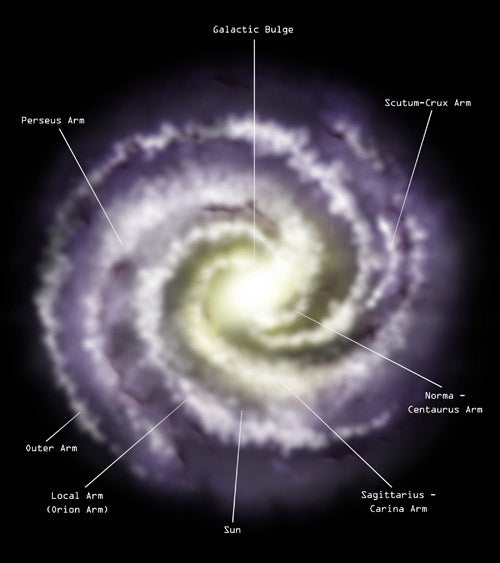Research shows the Milky Way’s Perseus arm lies closer to Earth than previously thought. It is 6,400 light-years away, nearly half as far as previous studies had found. The Perseus arm is the closest arm to the Orion arm, where the Sun resides. An international team of astronomers led by Ye Xu of Nanjing University used the Very Large Baseline Array (VLBA), a global system of 10 radio telescopes, to determine the distance.
The new measurement has an accuracy of 0.01 milli-arcsecond. This resolution is equivalent to observing a person on the Moon and determining which hand he or she is holding a book in. It is also 100 times more accurate than the best previous distance measurement, gathered by the Hipparcos satellite. Earlier studies based on star motions provided a distance close to 14,000 light-years, while comparisons between stars’ apparent and intrinsic brightnesses yielded a number close to 7,200 light-years.
In addition to resolving this long-standing distance-measurement discrepancy, the five observations made between July 2003 and 2004 enabled the astronomers to plot W3OH’s 3-D movements through space. W3OH has methanol masers, compact, strong radio sources that served as beacons for the observations. The team found W3OH orbits the galaxy slower than the galaxy spins and is falling toward the Milky Way’s center. Over time, this and similar studies will help astronomers map the galaxy’s unseen dark matter.
In the meantime, the team will use the VLBA to map other parts of the galaxy. This data will refine astronomers’ knowledge of the Milky Way’s structure, which is difficult to determine given our location within the galaxy itself.
These results appeared online in Science Express December 8, 2005.










